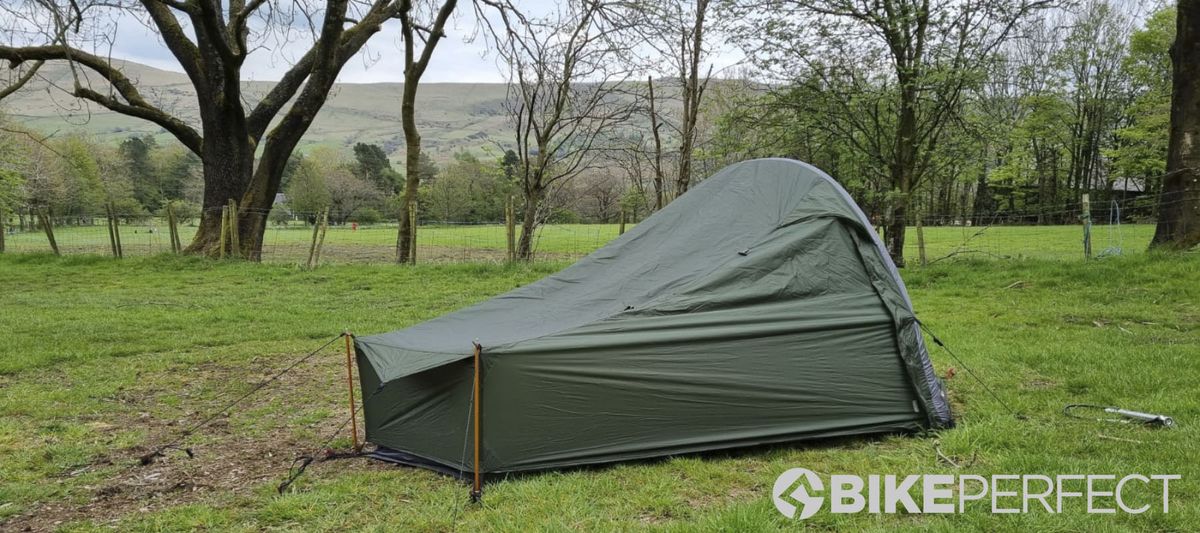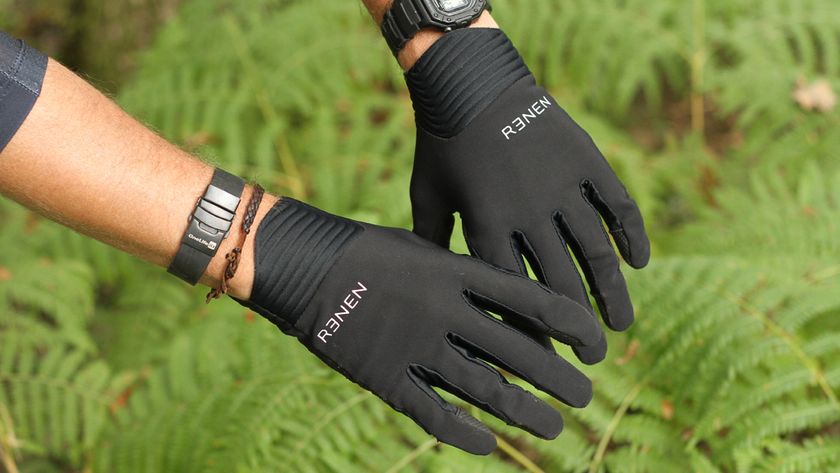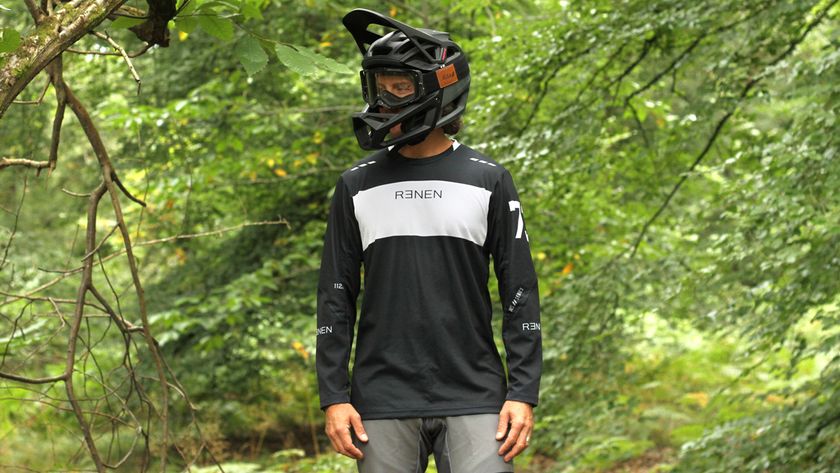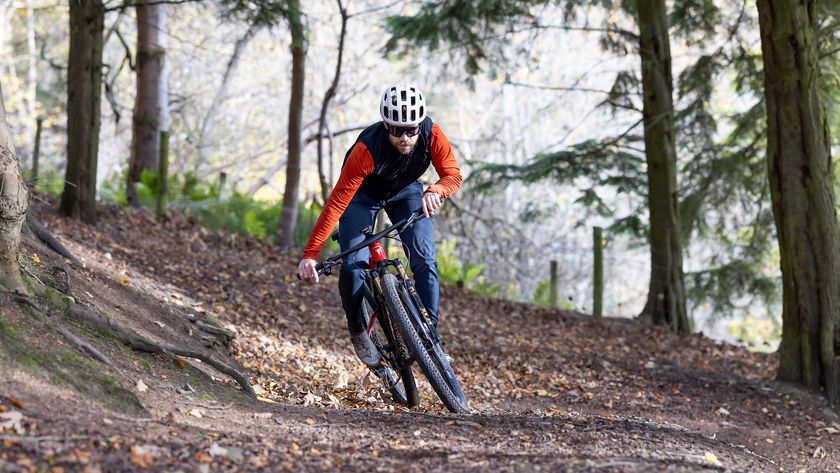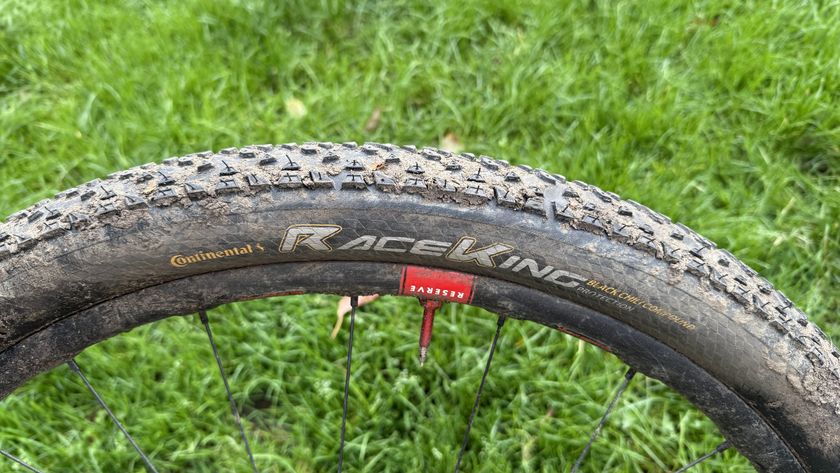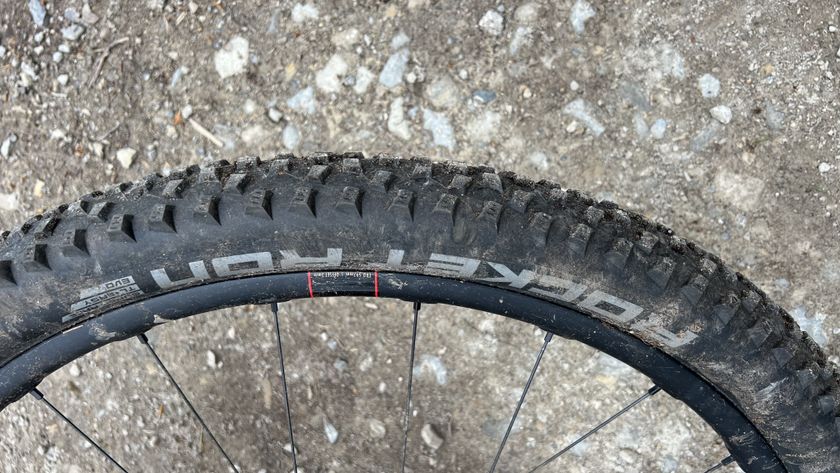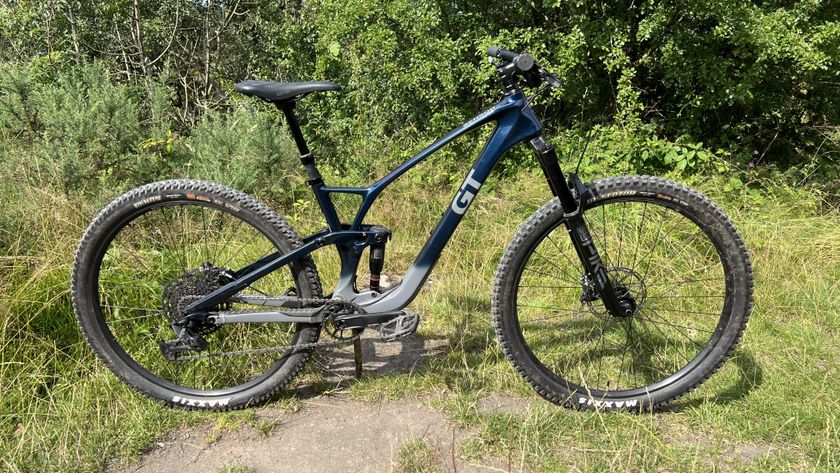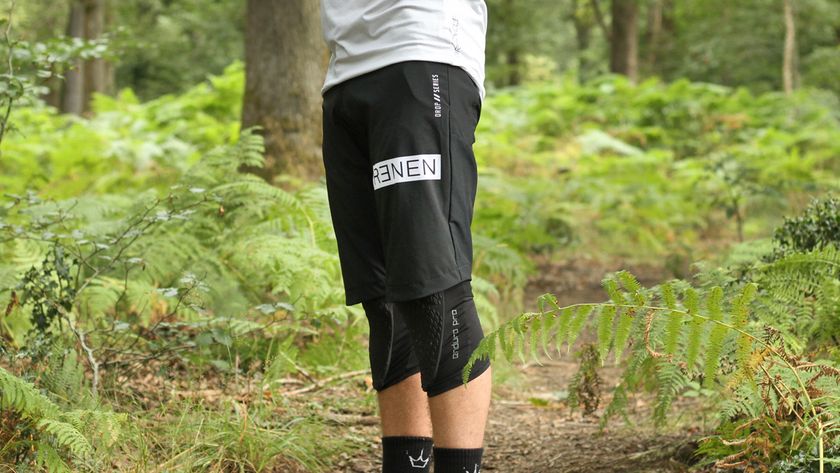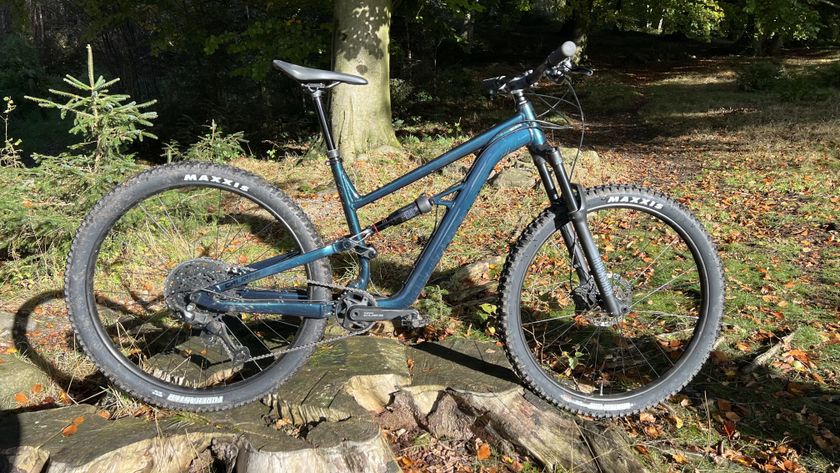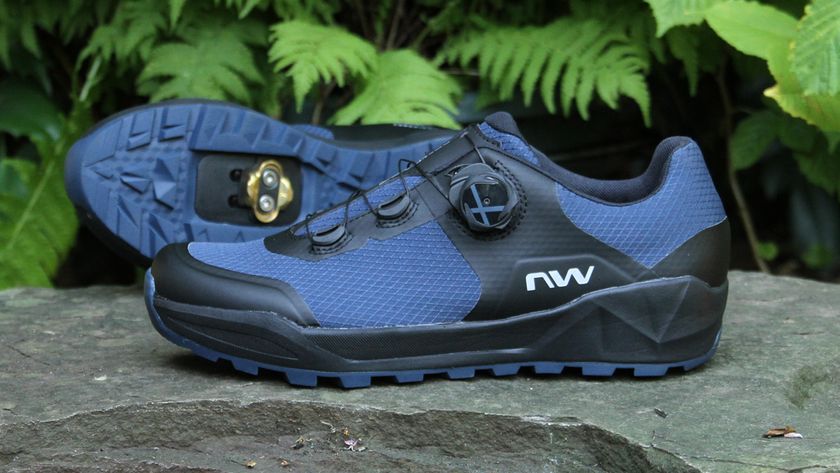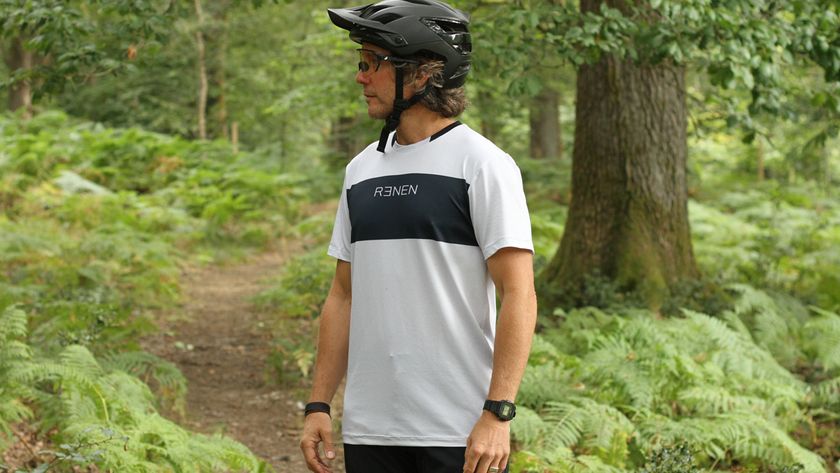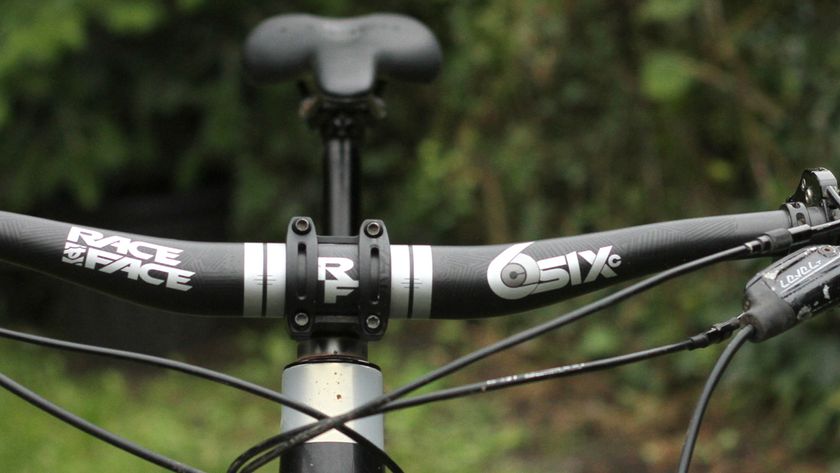Early Verdict
Incredibly packable and easy to inflate, the Aeronaut 1 is a simple and convenient tent option for bikepackers heading out for a fairweather overnighter. However, its flimsy structure, combined with incessant pooling at the footbox, means we wouldn't recommend it for use in adverse weather
Pros
- +
Super light and packable
- +
Inflates using a bike pump
- +
Also foot-pump compatible
- +
Stealthy colorway for wild camping
- +
Sizeable porch for bag storage
- +
Easy-to-use side entrance
- +
Air vent to reduce condensation
- +
Reflective guylines
- +
Good quality pegs
Cons
- -
You can't comfortably sit up inside for long
- -
Water pools above the footbox in rain and causes it to sag
- -
Outer fabric snags in zipper easily
Why trust BikePerfect
Alpkit is renowned for its budget-friendly outdoors offerings, ranging all the way from cycling kit to camping equipment while covering myriad other disciplines such as climbing and mountaineering.
Earlier this year the brand launched its Aeronaut tents designed specifically for bikepackers. As with all things bikepacking, low weight and compact size are big priorities, and so in designing the Aeronaut, Alpkit knew the parameters within which it had to work if it wanted a spot on our list of the best bikepacking tents.
While bikepackers often rely on bivvy setups as a way to save on space, sleeping out in the open isn’t for everyone. However, tents can take up some serious space and weigh a fair amount as well, plus the metal poles often make it difficult to fit them into a lightweight bikepacking setup.
With the Aeronaut, Alpkit seeks to hit that sweet spot smack-bang in the center of those two options. While inflatable tents aren’t anything new, the Aeronaut appears to derive its overall concept and design from Vango’s F10 Hydrogen Air tent while retailing for a fifth of the price.
Having used it extensively over the course of the summer (which, in the UK at least, involves all manner of weather conditions from blisteringly hot to sideways rain), we've now had plenty of hands-on experience to determine whether the Aeronaut 1 is worth your hard-earned cash. Read on to find out what we think of it.
Design and aesthetics


The Aeronaut 1 is a one-person inflatable tent (there’s also an Aeronaut 2 available for a pair), and while Alpkit cannot officially encourage its use for wild camping, which is illegal in some places, it’s fair to assume for all intents and purposes that with its stealthy green colorway, it's destined to be erected after dark and dismantled at sunrise.
The ripstop nylon fabrics feel high quality and hard-wearing, while the outer layer is sufficiently opaque to offer some privacy. The inner fabric meanwhile is very soft and feels quite delicate, so we’d recommend using a groundsheet to prevent it from succumbing to abrasion.
Aesthetically the Aeronaut looks very similar to Alpkit’s other one-person tent, the Soloist, sharing the same stealthy green outer that blends into its surroundings. For anyone who’s used an Alpkit tent before, the black guy ropes with reflective elements and red Y-beam pegs will be familiar. The pegs are very easy to use and remove from the ground, thanks to the knotted rope at the ends. However because they don’t have round hook ends, be sure to insert them at an angle with the cut-out facing downwards to catch the ropes and hold them in place.
It comes with a groundsheet sold separately, while the rest of the tent consists of two main sections: the outer and the inner. It pitches outer-first with the inner already attached, to save on time if you’re pitching in a hurry. You need to attach the two the first time you pitch it, and then you can leave them this way to save time in future. It’s as simple as laying the outer face-up, with the inner on top of it, and attaching it via a series of toggles and buckles.
Once it’s attached, you turn it over, peg it out in six places, inflate the pole and then adjust the tautness of each side to finetune it. It’s a very simple setup.
The entrance is at the side, and there are two loops and toggles to hold the door flap open. Inside is a decent-sized porch space with room enough for your shoes, helmet and several bikepacking bags or a couple of panniers. It's even roomy enough for you to sit in if you need a bit of shelter while preparing your morning brew.
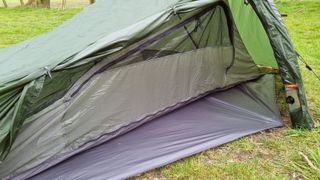
The inner compartment hangs from the outer, leaving a sizable gap between the two layers, while just above the entrance is an air vent that can be held open to prevent condensation building up overnight. While there’s plenty of room inside to comfortably sleep in, it’s difficult to sit upright for a sustainable amount of time inside the Aeronaut, without hunching slightly.
Inside the inner compartment, there are four storage pockets. One, near the foot box, is designed to stow away the door for when you’re hanging out at camp. Up by the head are two pockets that are ideal for storing valuables, earplugs, and anything else you want to keep near you at night, and finally above there’s a small suspended pocket that’s ideal for a reading light. However, we’d recommend sticking to something that doesn’t weigh very much, as anything heavy will cause sagging, eating into what little headroom there is already.
At the heart of the Aeronaut is the inflatable pole which provides the majority of the tent’s structure. It’s a long and cylindrical plastic tube that’s zipped into the outer, and tucks into a pocket at each end to create the curved shape that provides the headroom. The pole can be inflated with a choice of two different valves: there’s a Schrader valve for use with a bike pump, or a two-way valve that can be used with a foot pump.
At the foot box, there are two short alloy poles to insert into provided eyelets and webbing, to create a bit of space at the bottom of the tent. With our sample model there was a slight issue with these poles, in that one had been machined slightly differently from the other and was a lot thicker at the end, making it almost impossible to insert and remove. Since then, Alpkit has replaced it with a different pole and this problem has thankfully been resolved.
As a final design note, and a nice touch, Alpkit provides repair patches for all three of the different materials used in the Aeronaut.



Performance
Pitching the Aeronaut is pretty straightforward. Once you’ve laid out the groundsheet, it’s a simple case of pegging the tent (inner and outer) in place and then inflating the pole with a bike pump. I used the Lezyne Micro Floor Drive pump, since it works in a similar way to a track pump and makes much lighter work of it. Inflating with a bike pump can take a while and be pretty tiring, which is worth bearing in mind if you think you’ll be rocking up to camp late and exhausted.
After a couple of uses I ran into a slight issue with inflating the pole which I’ve now thankfully overcome. Just above where the valves are, there's a label that very clearly instructs you to not overinflate the pole, though of course how much inflation is too much, is subjective and open to interpretation. The first few times I used this tent, I erred on the side of caution and found that as I attempted to inflate, the pole would fold over on itself and prevent air from getting through to the next compartment. As a result it wouldn't stand up and support itself.
After playing around with different solutions, like removing the pole from the tent before inflation and attempting to wrestle it back into place afterwards, I've since discovered that I was in fact under-inflating it. If you find something similar happening, keep going, and use one hand to straighten out the kinks as you go to encourage airflow. Since the whole tent’s structural integrity relies on the pole, this is the most crucial part to get right. Thankfully it's now no longer an issue.
There are guyline tension locks to help you achieve a taut final result which, as you’ll see from the photos, I took a while to figure out. Now many months into its use I've gotten the hang of pulling everything tight where it needs to be, however I do still find that when used in the rain, water still pools above the footbox. I think it really just comes down to the construction of the Aeronaut - with a thin outer layer resting on an inflatable pole, it certainly does a good job of providing overnight shelter, but it's not the most structurally sound tent you can spend the night in. You have to accept some compromises if you want an entire tent system you can fit inside your bar bag.


In terms of ground space, I’m 156cm and had plenty of space above my head and below my feet while lying down, in fact I can stretch out with my arms above my head and touch each end with my hands and feet. The Aeronaut 1 measures at 240cm in length, and while there’s no official figure published for what the maximum height would be to comfortably sleep in there, I would hazard a guess that most people could potentially make it work. However, if you are taller than average, it would be worth checking this out before investing.
Getting in is very easy, while getting out can be a little more tricky when you’re combining it with stepping into your cycling shoes, but the zip for the inner compartment entrance works really well. It’s low friction and makes for a very quick and easy escape without losing the warmth inside.
The porch space is also really handy and allows you to store your bags overnight — especially useful if it’s raining or you’re not completely remote — and you can even sit in the space while you cook, though of course be sure to keep a safe distance between the tent and your stove, because it’s highly flammable.
Packing it back up is super quick and easy, you simply pull out the two-way valve to release the air in one go, roll up the tube from the non-valve end to extract all the air, and then roll up the tent as you normally would.
Verdict

The Alpkit Aeronaut 1 is a bikepacking tent designed to be pitched in the dark and packed up in the morning. It’s not the kind of tent you’d necessarily take to a campsite for a multiday trip like I did the first time I used it. If you want something you can use as a base, then you’d probably be better off with something slightly larger that you can sit up in.
However, if you’re looking for a lightweight tent that packs down small enough to fit into your best bikepacking bags, then it serves its purpose very well. Packed down, it’s compact, and minus the poles and pegs, the bulk of the tent can be squashed down to fill a small space in a bar bag or similar. This is pretty key for me in particular because I’m a short rider on an XS bike which, in itself, struggles to support a lot of cargo due to lack of space. For reference, I was able to squeeze the entire thing, along with an Alpkit Cloudbase sleeping mat and Alpkit Drift inflatable pillow into an Ortlieb Ultimate 6 bar bag.
Tech Specs: Alpkit Aeronaut 1
- Price: £179.99 / $219.99 / €199.99 / AU$336
- Materials: 100% 15D Si/PU nylon ripstop (outer), 20D nylon (inner), 20D PU nylon rip-stop (groundsheet)
- Packed dimensions: 28cm x 13 cm (compressed length x diameter)
- Pitched dimensions: 240cm x 145cm x 100cm (length x width x height)
- Weight: 1,210g

Mildred previously worked as a review writer for Bike Perfect. She enjoys everything from road cycling to mountain biking, but is a utilitarian cyclist at heart. Determined to do everything on two wheels, she's even moved house by bike, and can regularly be found pedaling around Bristol and its surrounding areas. She’s spent over four years volunteering as a mechanic and workshop coordinator at the Bristol Bike Project, and now sits on its board of directors. Her expertise comes from previously working in a bike shop and learning the ins and outs of the industry, and she's previously written for a variety of cycling publications, including Bikeradar, Cycling Plus, Singletrack, Red Bull, Cycling UK and Total Women's Cycling. At home on slicks and knobblies alike, her ideal ride covers long distances through remote countryside, on mixed terrain that offers a bit of crunch, followed by a gourmet campfire meal and an overnight bivvy beneath the stars.
Rides: Stayer Groadinger UG, Triban RC520 Women's Disc, Genesis Flyer, Marin Larkspur, Cotic BFe 26, Clandestine custom bike
Height: 156cm (5'2")
Weight: 75kg
What is a hands on review?
'Hands on reviews' are a journalist's first impressions of a piece of kit based on spending some time with it. It may be just a few moments, or a few hours. The important thing is we have been able to play with it ourselves and can give you some sense of what it's like to use, even if it's only an embryonic view.
